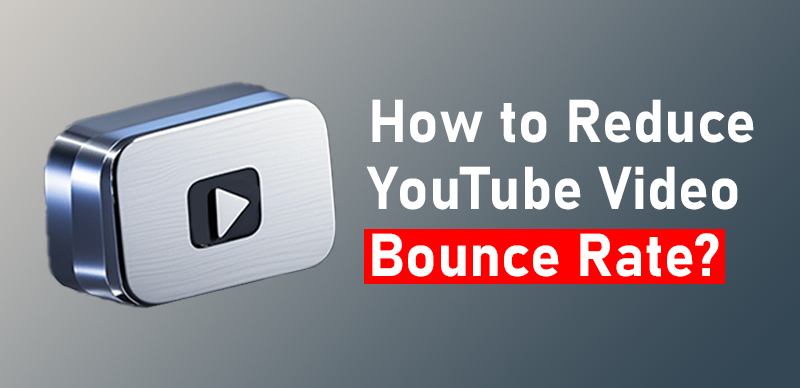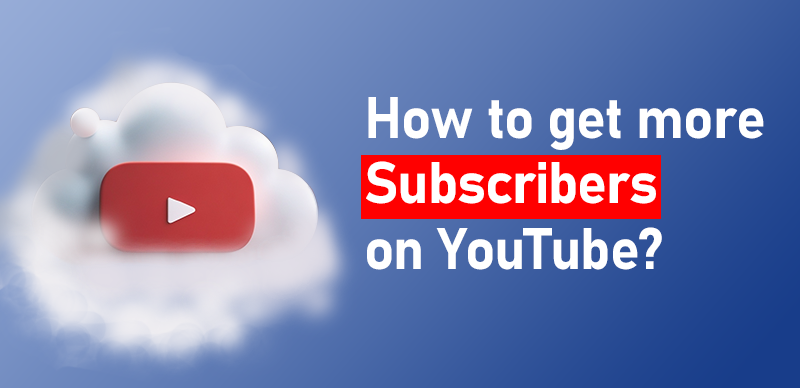How to reduce YouTube video bounce rate?

Last Updated: Oct. 03, 2024 | FEATURED IN: Youtube 103 >
A meticulously crafted YouTube video is released with high expectations, but the data received is not impressive, which can be disheartening and may even dampen one’s interest in creating content. However, a high bounce rate is a clear indication that your content may not be of interest to the audience. What you need to do is further adjust and optimize, using effective methods to improve video retention rates.
So, how can we turn this situation around? After reading this analysis, you’ll understand!

How to reduce YouTube video bounce rate
1. Understanding Bounce Rate
Bounce rate refers to the proportion of viewers who leave after watching only a part of your video. For example, if 100 people click on your video and 60 of them leave before watching half of it, then your bounce rate is 60%.
- The calculation of bounce rate is simple: the number of viewers who leave divided by the total number of viewers.
- Bounce rate directly affects the ranking of your video in search results. YouTube’s algorithm considers videos with a low bounce rate to be more valuable, thus giving them more recommendations and exposure opportunities.
2. Optimize Video Openings
The first 30 seconds of a video are crucial for capturing the audience’s attention. You can quickly attract their curiosity with an interesting question or by showcasing exciting snippets from the video.
For instance, if you are a fitness blogger, you could start with a short clip of you performing a challenging move, followed by a line like “Want to know how I did it?” This not only grabs the viewer’s attention but also sparks curiosity, encouraging them to continue watching for answers within the video.

fitness blogger
3. Ensure Content Value
Meet the audience’s needs and expectations:
First, delve into understanding your target audience. Based on their needs and interests, determine the theme and content of your video, ensuring that your video provides truly valuable information to them.
For example if you are creating a video on financial tips, introduce the core content right away: how to save money through simple budget management. By offering practical solutions that address the pain points of your target audience, you can significantly increase their interest in watching.
Maintain content uniqueness:
On the YouTube platform, no matter what type of content, there’s likely someone doing it. However, unique and contrasting or novel content has always been a favorite among viewers. You can try discussing a topic from different angles or providing insights and experiences that others don’t have.
Continuously learn and improve:
Over time, the needs and preferences of your audience will change. Analyze your viewer demographics, preferences, age, and other data to continuously refine and enhance your creative abilities, bringing better video content to your audience.
4. Use of Visual and Auditory Elements
Another way to enhance the appeal of your video is by utilizing colors, animations, and sound effects. Lively visual effects and clever soundtracks can greatly enhance the viewer’s experience. For example, use dynamic text to emphasize key information, or add some popular music or sound effects to certain plot points to create an atmosphere. This not only makes the content more attractive but also helps viewers better understand and remember the information.
You can even imprint on your audience with unique background music or sound effects. If viewers think of you when they hear such music or sound effects in other videos, you’ve already succeeded.

background music
5. Appropriate Video Length
The length of the video is not always better when it’s longer. It is recommended to adjust flexibly according to the type of content. For example, the optimal duration for tutorial videos is 10-15 minutes, while Vlog videos can be slightly longer. During production, pay attention to audience feedback to understand which parts arouse interest and which may lead to bouncing. Based on the data feedback after publishing, you can further adjust and optimize the video length and content rhythm to better retain viewers.
Analysis and Optimization
YouTube’s analytics tools can monitor the bounce rate, which is an important step in improving video performance. By looking at data such as watch time, audience retention, and traffic sources, you can clearly understand at what points viewers are leaving. For example, if there is a sudden increase in bounce rate during a certain period, consider re-editing that part of the content or adding more interesting elements.
Continuous analysis of data and optimization adjustments can help reduce the bounce rate of your channel and improve the overall performance of your videos.

YouTube’s analytics
Summary
Reducing the bounce rate of YouTube videos requires a multifaceted approach, optimizing video openings, ensuring valuable content for viewers, using visual and auditory elements, and regularly analyzing and optimizing. These strategies are important means to help you improve audience retention rates.
Persist in optimizing video content and form to attract more viewers to stay. When you achieve a low bounce rate, your later benefits will also grow accordingly. So, take action now.


